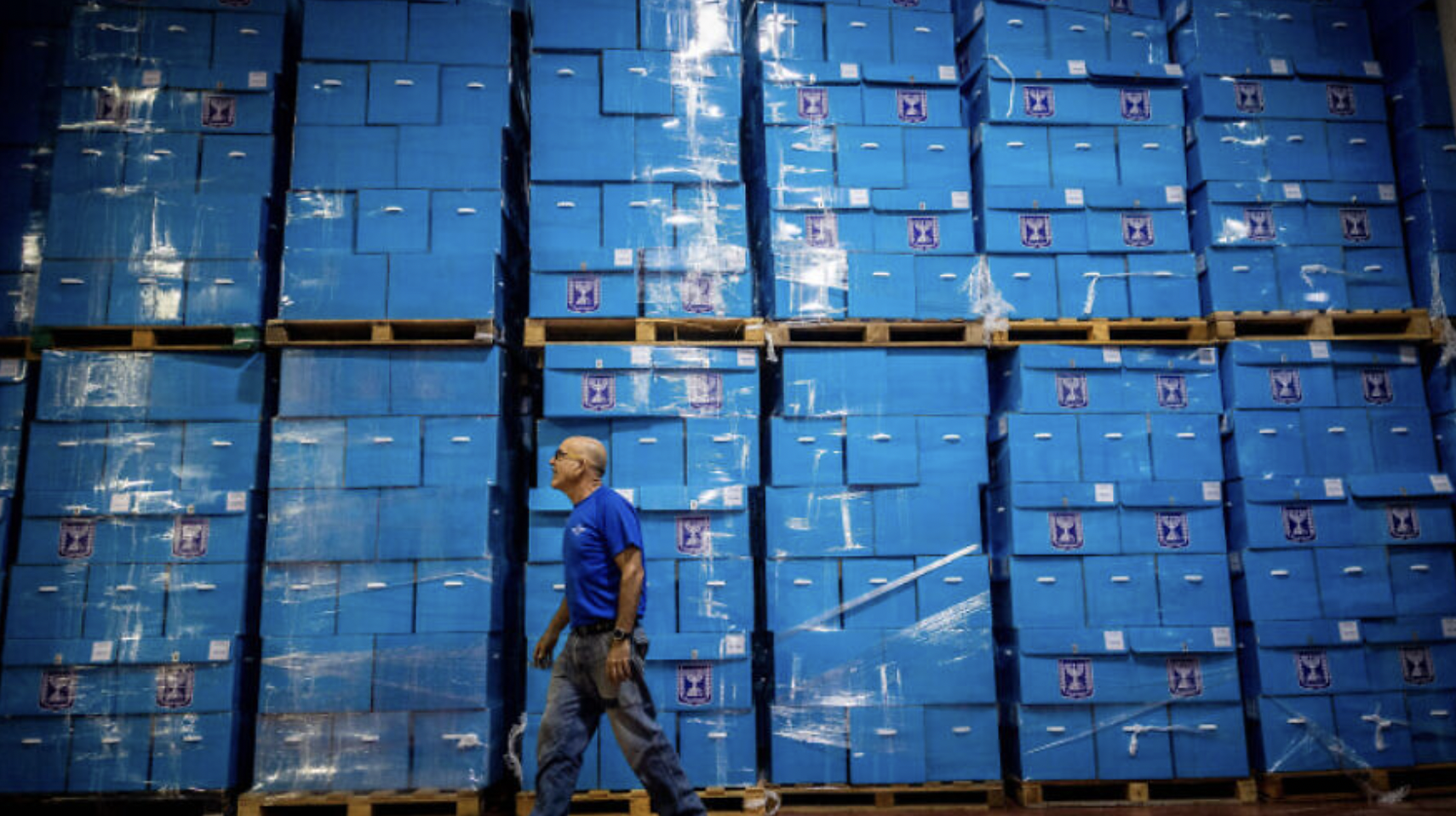On Nov. 1, Israelis will go to the polls for the fifth time in three years and seven months.
To put this into perspective, my son just turned 22, and this will be his fifth time voting in a national election. In other countries, he might have voted once, maybe twice in this time, but in Israel he is already an old hand.
Whether voter turnout falls as a result of growing exhaustion with elections remains to be seen. Polls—although unreliable—suggest that this election, just like the last four, could result in a deadlock.
Fatigue or not, and however frustrating, it’s important for all of us to remember that this is democracy in action.
For an alternative perspective on this latest Israeli election, we took a look at some of the more interesting numbers.
1. Israel’s recent bout of frequent elections means it is now first in the world in terms of frequency of elections since 1996.
With elections taking place on average every 2.4 years since 1996, Israel beats out every other country, including Greece (2.53) and Spain (2.96).
2. There are nearly 6.78 million Israelis eligible to vote in this election.
3. In the last election, for the 24th Knesset, voter turnout stood at 67.4%, the third lowest turnout in Israeli history.
In 2006, voter turnout was 63.5% and in 2009, 64.7%. By contrast, the highest voter turnout was in Israel’s first elections in 1949, when a massive 86.9% of eligible Israelis turned out to vote.
4. Thirty-nine parties will be vying for a place in the 25th Knesset.
Aside from the larger parties—Likud, Yesh Atid, the National Unity Party, the United Arab List—this includes small parties like Yesh Kivun and Alei Yarok that campaign for marijuana legalization; Fiery Youth, run by Hader Muchta, a TikTok influencer who at 20 is a year too young to serve in the Knesset; and The Pirates, who campaign for the development and promotion of, you guessed it, pirates.
5. Israel’s election will cost an estimated $22 per voter.
The elections have a budget of around $151 million, according to the Knesset’s Finance Committee. Based on the number of potential voters at the time the budget was prepared, that comes to $22 per voter.
6. Israel’s polling stations will be operated by some 60,000 officials, as well as more than 70,000 polling committee members.
7. Around $43 million—28% of the budget—will be allocated to poll workers’ salaries.
8. Some $6.5 million will be spent on Covid-related precautions.
This is significantly down from the $66 million put aside for pandemic precautions during the last election, in May 2021.
9. As a paid day off for employees, November’s election day will cost the Israeli economy between $733 million and $837 million according to the Israel Democracy Institute.
Small and medium-sized businesses bear 43-53% of those costs. The total cost of the six election days since 2015, including this November’s election, is an estimated $4 billion according to the Israel Manufacturers Association.
Not surprisingly, businesses are calling for the government to end the vacation day rule.
10. Retail booms on Israel’s election day.
For many Israelis, election day is an opportunity to go to the beach, the parks, or the mall. According to the Automated Bank Services, which manages the national payment system for credit card companies, Israelis spent $90.4 million in just three hours between 9 a.m. and 12 p.m. on the March 2021 election day.
11. The most important number of all in Israel’s elections is 61.
The Knesset is made up of 120 members. To win a majority, a party needs 61 supporters. In the country’s 74-year history, no single party has ever done that.
Instead, after every election, would-be prime ministers must wheel and deal with other parties to form an alliance, often giving small parties a power they would not normally have.
If no party can reach a coalition of 61 seats after the November elections, then the country will have to go back to the polls. For the sixth time.
This article was republished by JNS.org


























